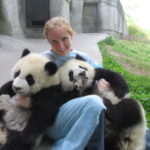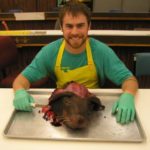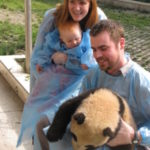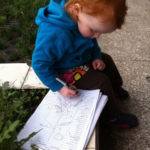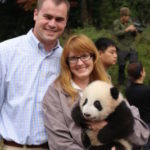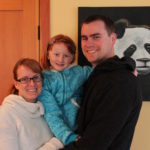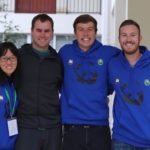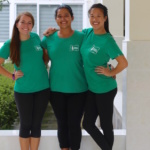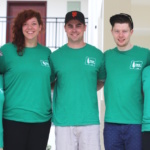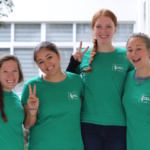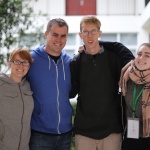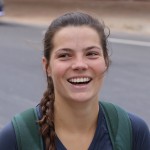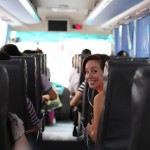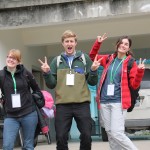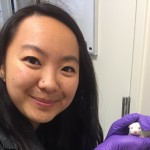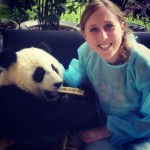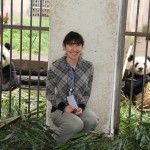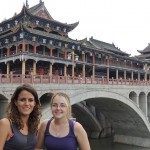[vc_row][vc_column][vc_column_text]
Name: PDXWildlife
Tax ID: 45-3155839
Address: 5223 SE 41st Ave., Portland, OR 97202
Exempt Status: 501 (c) (3)
Email: pdxwildlife@pdxwildlife.com
————————————————–
2011 Annual Report (89kb): 2011 Annual Report
2012 Annual Report (89kb): 2012 Annual Report
2013 Annual Report (89kb): 2013 Annual Report
2014 Annual Report (160kb): 2014 Annual Report
2015 Annual Report (172kb): 2015 Annual Report
2016 & 2017 Annual Report (5.2 mb): 2016/2017 Annual Report
2018 Annual Report: 2018 Annual Report
2019 Annual Report: 2019 Annual Report
[/vc_column_text][/vc_column][/vc_row][vc_row][vc_column][vc_column_text]
A Brief History of PDXWildlife
Early 2011- In the final year of my masters degree and at the beginning of Meghan’s PhD, we were both applying for a multitude of grants to conduct research and discovered that Portland State University imposed a large administrative fee on the funds we were trying to secure. Believing this to be unfair and costly in the name of science, we started brainstorming on how to apply 100% of our grants to our projects. After toying with a few dead end ideas we began to wonder why we couldn’t become the institution and have complete control of the financing, research, and the resultant publications. The final decision to register as a 501 (c)(3) non-profit came after learning that we could turn our love of biology into a public entity.
We spent the 2011 breeding season at Bifengxia and saw the need for a continued presence to gather the data and hire interns. After going through the rigors of applying for tax-exempt status, we were formally registered as a non-profit on Sept. 1st, 2011.
- 2007- Smithsonian Fellowship at Chengdu
- 2009- Grad school mercury project
- 2011- Our first family panda photo
2012- As 2011 was our pilot year for conducting research and establishing PDXWildlife as a public entity, 2012 began what would essentially become the founding pillar of our mission and vision: to conserve species and habitats by producing innovative, high-quality research and educating communities about their natural resources. We quickly recognized a need to develop and conduct innovative in-situ and ex-situ wildlife research to identify critical conservation issues and provide creative solutions to managers and fellow scientists. As these novel studies would require a significant amount of manpower, the PDXWildlife intern program was thrown into high gear.
We returned to Ya’an and Bifengxia in January and stayed for about four months. We decided to rent a small apartment on the south side of the city and made ourselves a cozy little home. This is when we hired our first interns- Arina Woolery & Kim Render. The setup worked very well as they would stay in the apartment as we returned home.
2013- The process of living in Ya’an for four months around the panda breeding season was now part of our yearly schedule. Meghan was able to collect the vast majority of her data for her PhD during this time. With scholastic obligations to attend to back in the U.S., we would return by the end of May. Interns would continue where we left off as there would always be late breeders, sometimes into June. Additionally, we added on more studies to our program once we began to identify specific “gaps” in the knowledge base of panda research. Such as- toxicology and stereotypic behaviors. The total number of interns that we hired in 2013 slightly increased to three, as we added on the summer season.
2014- This would prove to be a busy year, as Meghan would complete her PhD and the mercury project would also be completed… or so we thought. We traveled back to Bifengxia to present our results to the CCRCGP and to potentially say goodbye to all of our colleagues and friends as we weren’t sure if we would return. When we got back home, we were under the idea that we would move on to domestic careers, reflecting on China as an exciting couple of years. Meghan was awarded her doctorate and spent a few months teaching and writing publications. One which would be accepted by Nature Communications. At the end of her teaching term, we gave serious consideration to the future of PDXWildlife and if it made sense to continue as we had no definitive plans to return to China. But, China wasn’t ready to let us go.
At the end of the summer, I sent in the Mercury paper for publication and was accepted. The following day the Editor-In-Chief called and asked if I was interested in expanding the paper into a multi-institutional project. At nearly the same time, Meghan approached the San Diego Zoo about a post-doctoral idea that centered around a Male-Male panda competition. In the span of a few months, we went from believing that we wouldn’t return to China, to developing research contracts that are slated to last between five to ten years. In short, 2014 would turn out to be a year for project development, giving rise to PDXWildlife as a semi-permanent fixture at the CCRCGP.
- 2012- Dee helping collect behavioral data
- 2015- A panda cub photoshoot
- 2017- Excited to start the new year
2015- Ramping up research in China takes time and a whole lot of patience. We returned in early February to finalize our MOU’s and usher in our first large wave of interns. As we terminated the lease on our smaller two-bedroom apartment on the south side of Ya’an, we found a larger, four-bedroom apartment near the Bifengxia bus stop. Our first hires were- Ryan and Maria for the breeding season, followed by Lauran, Miranda, and Jasmine for the summer, and finally Daniel, & Angelica for the fall. Each proved themselves instrumental in helping us develop our current methods & materials for a multitude of studies. 2015 was a very productive pilot year.
2016- Rolling into the breeding season with several new projects, Meghan and I had to make a significant change in our travel plans due to the fact that our own little cub was now in elementary school. We would no longer be able to travel as a family. Instead, we would have to alternate trips. With four seasons to divide up, Meghan would fly over in February and August, and I would take May and November. Four trips would have been ideal, but we ended up making six to accommodate for contract negotiations and conferences.
In 2012 we began with two interns. With a full gamut of studies, we now require a minimum of 14 interns. The 2016 lineup included- Nicky, Ariana, Jennifer, Alyssa, Bryan, Nicole, Hailey, Doireann, Sofany, Celina, Scout, Zack, Zachary, and Stephanie.
- Stephanie, Zack and Zachary
- Scout, Sofany and Celina
- Doireann, Hailey, Bryan and Nicole
- Jennifer, Ariana, Nicky and Alyssa
- Daniel and Angelica
- Miranda
- Lauran
- Ryan and Maria
- Jasmine
- Grace
- Arina
- Amelie and Stephanie
2017 & Beyond- Each successive year proves to be a little busier than the previous. Adding into the mix, we are now assisting the CCRCGP with reintroductions in an attempt to better identify potential bears for the program. This is a milestone for captive breeding in that it is the next step after solidifying a breeding population. Additionally, our intern program is fattening up to accommodate 16 individuals from all over the world as Meghan and I are increasingly asked to assist students in developing their own research questions. We believe that this is a necessity as the current job and graduate school market have become increasingly difficult to navigate and enter. We are glad to provide this service as we have first hand experience.
We are starting to widen our travel berth, but Bifengxia remains our main base of operations. With hormone and reintroduction efforts in full swing, we find ourselves also spending time at Gengda and Dujiangyan. I’d think it’s safe to say that we are going to have an exciting year given what we are currently working on:
- Male – Male Competition
- Total Mercury & Methylmercury
- Stereotypic Behaviors
- Maternal Care
- Personality and Domestication Effects
- Fecal Hormone Analysis
- Reintroduction Studies
To cap how we feel about our blossoming company- we are very proud of how everything has developed. What began as a way to apply more funding to the ideas we had during grad school, has now developed into a multi-faceted research program that puts like-minded students on the front lines. These continually developing questions provide a service to those looking for a hands on experience through an intensive internship. It’s a wonderfully symbiotic relationship. We operate a completely transparent research business that trains young scientists to prepare for a highly competitive job/education market, all while gaining a further understanding of our living and often misunderstood world. It goes without saying that we love what we do and hope to continue on this track for the foreseeable future.
Last but not least- The name of PDXWildlife comes from the city in which we reside, Portland, Oregon. PDX is also the airport code for Portland International Airport. The second half of our name is due to the fact that we are wildlife biologists.[/vc_column_text][/vc_column][/vc_row]

